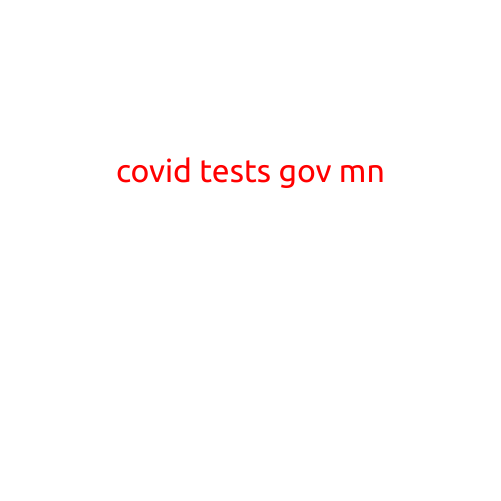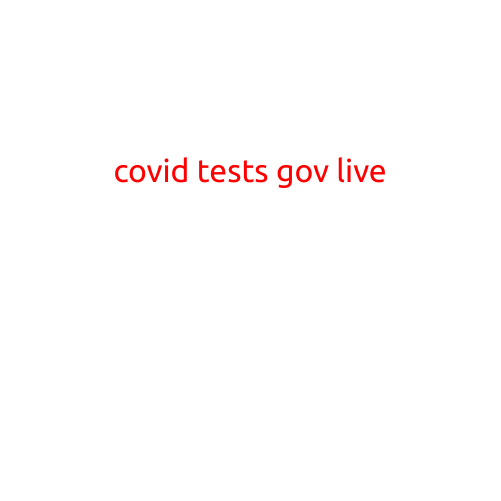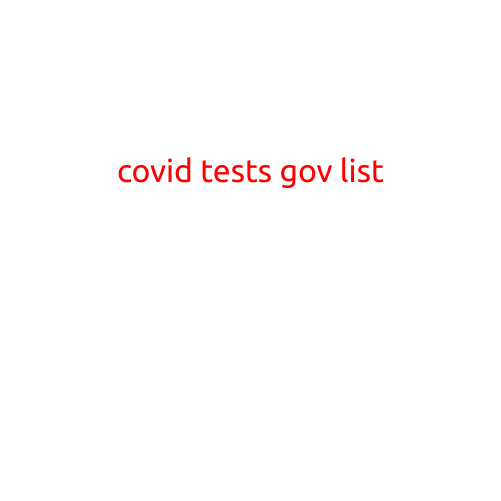
COVID Tests: What You Need to Know About Testing Governor’s Guidelines in Minnesota
As the COVID-19 pandemic continues to spread across the globe, testing for the virus has become a crucial tool in helping to identify and contain outbreaks. In Minnesota, Governor Tim Walz has issued guidelines regarding COVID testing, which aim to provide clarity and reassurance to residents and businesses.
What is COVID Testing?
COVID testing involves taking a sample from an individual and analyzing it for the presence of the SARS-CoV-2 virus, which causes COVID-19. There are several types of tests available, including:
- Rapid Antigen Tests: These tests detect the presence of the virus’s proteins and can provide results in as little as 15 minutes.
- Molecular Tests: These tests detect the genetic material of the virus and can provide more accurate results.
- Serology Tests: These tests detect the presence of antibodies in the blood, which can indicate previous exposure to the virus.
Governor’s Guidelines for COVID Testing in Minnesota
In response to the pandemic, Governor Tim Walz has issued guidelines for COVID testing in Minnesota. These guidelines aim to provide a framework for testing and identifying individuals with COVID-19, while also minimizing the risk of exposure and spread of the virus.
Who Should Get Tested?
According to the Governor’s guidelines, individuals should get tested for COVID-19 if they:
- Have symptoms: Such as fever, cough, or shortness of breath.
- Have been exposed to someone with COVID-19: Whether through personal contact or through travel to an area with high transmission rates.
- Have been in close contact with someone who has tested positive for COVID-19: Within the past 14 days.
- Are at high risk of severe illness: Such as older adults, people with underlying health conditions, or people with compromised immune systems.
Where Can I Get Tested?
COVID testing is available at various locations throughout Minnesota, including:
- Local healthcare providers: Primary care physicians, hospitals, and urgent care centers.
- Community testing sites: State-run testing sites and mobile testing units.
- Drive-thru testing stations: Many pharmacies and healthcare providers offer drive-thru testing.
- State quarantine sites: For individuals who have been ordered to quarantine by the state.
What Happens After I Get Tested?
If you test positive for COVID-19, you will be contacted by the testing site or local health department. They will provide guidance on next steps, which may include:
- Self-isolation: Stay at home and avoid contact with others for at least 10 days.
- Contact tracing: Provide information about people you have been in contact with so they can be notified and tested.
- Medical care: Continue to monitor your symptoms and seek medical attention if they worsen.
Conclusion
COVID testing is a crucial tool in helping to control the spread of the virus in Minnesota. By following the Governor’s guidelines for testing and seeking testing if you have symptoms or have been exposed to someone with COVID-19, you can help protect yourself, your loved ones, and your community. Remember to always follow proper precautions, such as washing your hands frequently and practicing social distancing, to reduce your risk of exposure and transmission.





